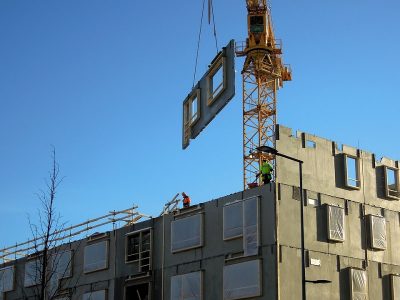The decision by the UK to leave the European Union does not seem to have dented the French real estate sector with mortgage rates still low and currency differences still positive.
Indeed, the vote coincided with a further drop for French mortgage rates to all time historic lows. These ultra-low long term fixed rates have in effect nullified the changes in exchange rates for British buyers and offer the opportunity to lock in long term value, according to John Luke Busby, private clients director at French Private Finance. He pointed out that a French repayment mortgage can now be found in the region of 2.15% fixed for 20 years nationally and perhaps down to 1.55% in Paris for some profiles. ‘This means that over a 20 year fixed rate mortgage period British buyers are now still ahead versus the highs of the pound against the euro last year,’ Busby said. ‘It is important to note that we have not had any withdrawals or cancellations on the basis of the referendum result from any of our ongoing applications. Whilst there will clearly be reflection around making new investment decisions in the French market for some UK buyers, investors from around the world are continuing with their purchases in France,’ he explained. ‘This trend is particularly noticeable in Paris where prices are starting to increase again, after a lull, and for investors earning in Dollars the euro is substantially cheaper. US dollar holders can now benefit from the double whammy of a strong currency and ultra-low interest rates,’ he added. Busby believes that overall there seems to be a quiet confidence emerging around the future of the UK economy whatever the result of the negotiations in Brussels or the UK Parliament. ‘There is confidence that, as of today, we remain in the EU so to all intents and purposes it is business as usual,’ he said. He also pointed out that all of the tax treaties relating to property are independent of EU membership for the British, who remain the largest non-resident buyers of French Property. Many regions in France are now starting to see growth in property prices, which herald larger gains once the EU economy can get going again,’ Busby added. ‘The mixture of the romance of French property ownership combined with soft property prices and ultra-low interest rates still conjure a compelling purchase proposition which is hard to ignore over the long term,’ he concluded. Meanwhile, one of the largest sellers of French property to British buyers has reported a 21% rise in sales in the first six months of 2016. Leggett Immobilier also says that since the referendum result enquiries have remained high with over 1,000 enquiries coming into the sales support team in the past seven days. Coupled with this Leggett Immobilier have had 34 offers accepted in the past week, a figure which is well above the weekly average. The firm’s figures show a 21% rise in sales agreed in 2016 so far compared with 2015 with sales agreed up 7% since the referendum was announced and a 44% rise in its fee income pipeline. ‘We have received over a thousand client enquiries on properties since the referendum result; and our agents across France have been agreeing sales to British purchasers all week,’ said Trevor Leggett, chairman of Leggett Immobilier. He also pointed out that the latest sales figures released by BNP Paribas International show that there has been a 29% increase in international buyers last year, which was led by British and Irish buyers who now account for 35% of the international market. ‘Although many people may be feeling uncertain in the wake of the referendum result, it seems that the British love affair with the relaxed French lifestyle, the wonderful culture and climate and the beautiful affordable property available here remains as strong as ever,’ Leggett added. One recent purchaser of a French home in the Dordogne Chris Matthews said; ‘We think it’s important to show our commitment to the EU and would not allow Brexit to get in the way of what we want to do with our lives’. Source link







